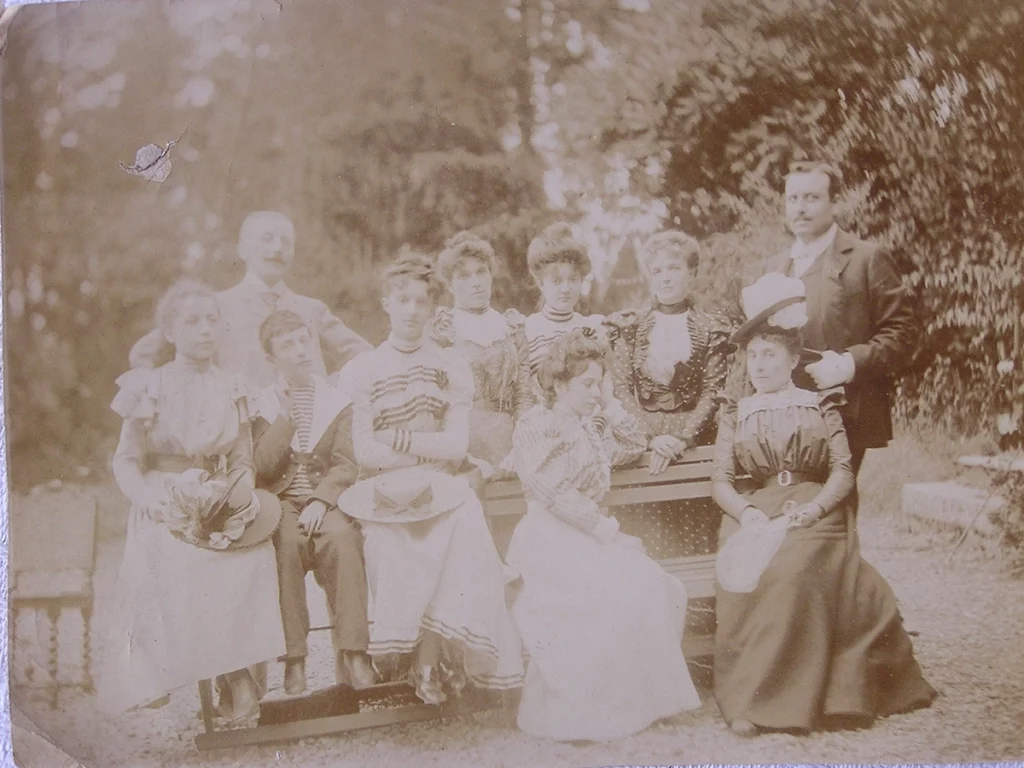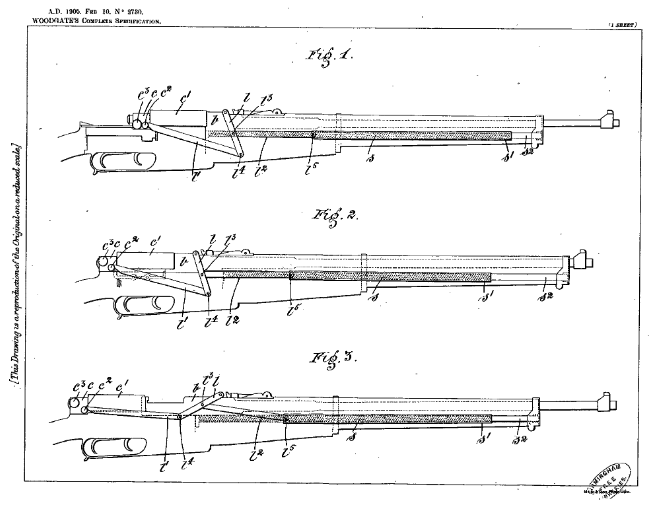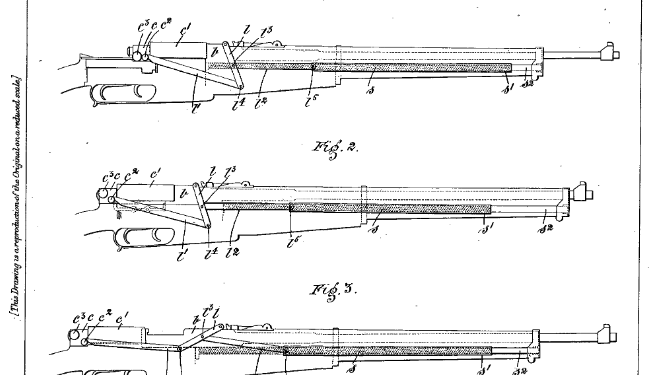Most firearms of the early 20th Century have worn faint, but discernable trails through history. However, there are some mysterious guns that history all but forgets, save for a mention in the odd contract proposal, trial report, or journal of the day. These guns are the subject of this series of articles. Hopefully, with a little research and the help of our curious readers, we can learn about and solve some of history’s firearm mysteries.
Today’s topic is the Faletans semi-automatic rifle and its inventor. This is one of the very rare cases where no other articles or books have been written on this subject. What I was able to gather for this article was from reports I have read through and a very helpful and in-depth look into the Faletans family, courtesy of one of its living members.
The Who
The roots of the De Faletans family can be traced back to the year 1269. Being of a lower class of nobility, they took part in most conflicts that France got involved in. In 1871, Charles Constant dit Nicolas de Thierry de Faletans would become the new patriarch after his father, also named Constant, passed away. In the same year, he would marry Olga Aleksandrovna Naryshkina, giving us an important clue to his future inventions and deals with Imperial Russia.

Charles de Faletans is very likely the inventor of our mystery rifle. Being named the Marquis, he would be the only one in the family who could title his inventions and investments with his full title, which he did very often. He would invest in the Ouro Preto Gold Mines in 1884 and is only named in the certificate as “Marquis.” He was also nicknamed Balle-aur-couer (Bullseye) de Faletans, as he would frequent exhibitions of marksmanship on a regular basis.
Nicolas’s clear interest in firearms helps us understand how he began working on one of his first inventions in the field of gunsmithing. This was a small caliber conversion for the Berdan and Gras rifles, patented in the early 1890s. According to some sources, the Berdan conversion was allegedly adopted by Russia. So, it’s not hard to presume that his connections to Russian nobility helped his invention along the trial process, as his wife Olga was highly connected with the Tsarina of Russia.
The What
In the early 1900s, Britain would test a couple of semi-automatic rifles, including the Mondrágon, the Kjellman rifle (presented by Captain P. Möller), and the Cei-Rigotti. Another, mentioned in the Small Arms Committee (SAC) files is the Marquis de Faletan’s rifle and carbine, tested on the 4th of July of 1903. The SAC describes the rifle as follows:
“The thin barrel of a Mauser M1888 rifle, capable of sliding ½-inch to the rear within its steel barrel casing. Round the barrel was a spiral spring which forced the barrel to the front. Underneath the barrel was a projection slotted out longitudinally, in which were two pivoted levers; the front one retains the barrel in its rearmost position while the bolt is traveling to and fro. The bottom of the rear lever strikes a projection on the magazine, and the top of this lever throws the bolt with considerable additional velocity to the rear”
“The bolt is locked by lugs on the front end engaging in recesses in the barrel immediately in the rear of the chamber. On the left side of the bolt is a longitudinal groove which is curved at the rear end. A stud pinned into the body works in this groove and unlocks the bolt on recoil taking place. The bolt is operated by hand by means of a slide on the right side provided with a handle.”
The rifle described seems to operate with a recoil system that pivots two levers when the action is operated. The Marquis continues by specifying that the rifle, in .311 caliber (described as being a short cartridge for Mauser rifles) was still in its early experimental stage while the short carbine, in 7.63x25mm Mauser, was more refined. In tests, the SAC did determine that, while the rifle version of the firearm did not perform well, the carbine version was remarked as working fairly well. He also offered to modify the current service rifle of the time, the M.L.E., to function with his system.
The Marquis would contact the SAC one more time to offer a full-sized caliber rifle for further testing by the committee, presumably in .303. But, following this letter, there was no further correspondence between the committee and Mr. De Faletans.
There are, however, reports of the Faletans rifle being tested by Switzerland in 1904. One year after that, Faletans’ rifle was submitted for testing in the United Kingdom. Even though I have seen some of the results of the Swiss trials, there is no mention of the rifle in the files I have gone through.
Where Does This Leave Us?
After this, the trail runs cold. To recap, the only mentions of this mystery rifle were found in the files of semi-automatic firearm evaluation conducted by the Small Arms Committee and on two old magazines which give no sources for the information they share. Even Faletans’ own patents don’t confirm the identity of our mystery designer, despite this, it can be presumed that only the current ruling member of the family could title himself as the “Marquis” which narrows down our choice to one member, Mr. Charles de Thierry de Faletans.
Nonetheless, I do have a few theories that I have discussed with other friends interested in this mystery;
Theory One: The Unknown Royal Armouries Example
There is a rifle in the Royal Armouries that somewhat fits with the description given to us by the Small Arms Committee. It’s in a very rough shape, like the rifle caliber version described in the documents, and it’s also a recoil-operated gun that uses two levers in a toggle position to operate the action. Despite this, the rifle might be the work of one Herbert Woodgate, more notable for his part in the Griffiths & Woodgate rifle. He took out a patent in 1906 which does resemble, although not perfectly, the gun in question.

Theory Two: The Mauser Connection
Mr. Rupert Willoughby, one of Faletans’s descendants, provided me with a chapter of the book he wrote about the Faletans family in which he mentions Charles Constant dit Nicolas’s inventions. He writes that in the summer of 1896, Nicolas was at Oberndorf am Neckar having two prototype rifles made by the Mauser company. This would explain the fact that the caliber of the two rifles were directly influenced by Mauser, as a reminder, one in 7.63x25mm and the other in what the inventor described as a “short cartridge for Mauser rifles.”
At the same time, this would mean that the first semi-automatic rifles ever made by the Mauser company were not even designed by Paul Mauser himself, predating the C98 flapper locking self-loader by two years. However, as far as I am aware, there is also no mention of Faletans in the Mauser literature.
How You Can Help
As mentioned before, I know of some sources that mention the Faletans, such as the Swiss trials reports of this rifle, but I have not been able to get a hold of these reports or any other comparable documents. I would also be very interested if anyone has a picture of something that might possibly be the Faletans.
I propose to you, the reader, that together we can solve these firearm mysteries. If you have any leads or additional information that I did not mention in this article, I urge you to send me an email at sircoutin@gmail.com.












